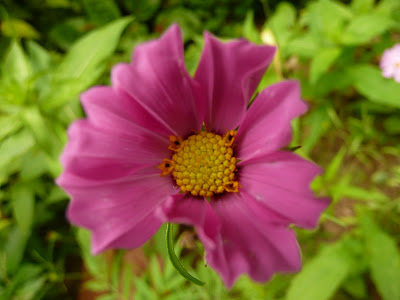
Many gardeners will recognize this picture of plantain,
Plantago. I have allowed this weed to remain in my backyard wildlife habitat because it provides food for the caterpillars of
Buckeye butterflies and some moth species. Every gardener seems to love butterflies, yet so many do their best to eradicate almost all of the food for their caterpillars.
I learned about this weed from the book
Weeds: Friend or Foe?--An illustrated guide to identifying, taming, and using weeds by Sally Roth. I have the Readers Digest version, published in 2002, the version on Amazon has a second author listed--so this paragraph may not apply to the version there. As a gardener whose ambitions are larger than his time available, and of course as an avid bird watcher, I am constantly looking for shortcuts in what I can skip in my yard and can allow to grow as food sources for my backyard denizens. This book was a godsend to me! But, I do find one major flaw in Ms. Roth's book. She does not distinguish enough between common weeds and invasive species. There are many, such as
multiflora rose and
japanese honeysuckle that birds and pollinating/nectar drinking insects love, but these plants that crowd out our native flora need to be eradicated if we are to help our native animal species survive in our suburban "ecosystem." See Doug Talamy's book and website
Bringing Nature Home for a discussion on just how important native plant species are to our local fauna. I am by no means an absolute purist in my garden when it comes to native --and local plants--but I am slowly working on ensuring that the plants in my backyard do the most to help the animal and insect species that should be here.




